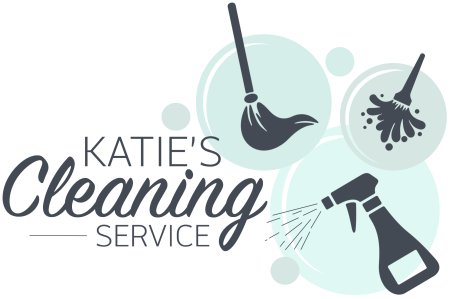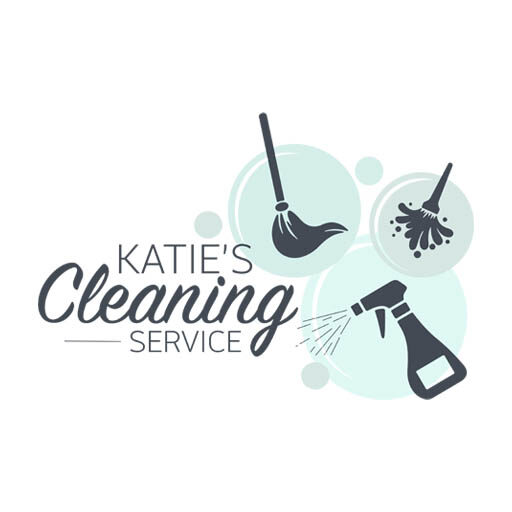A spotless home is a source of comfort and pride. Deep cleaning, which delves beyond the daily tidy-up, transforms your living space into a pristine haven. This ultimate deep cleaning checklist is meticulously crafted to guide you through a comprehensive cleaning journey, ensuring that every inch of your home gleams with cleanliness.
Why Deep Cleaning Matters
Deep cleaning transcends the boundaries of regular cleaning, offering profound benefits for both health and home. At its core, deep cleaning is a health-centric approach that significantly impacts the quality of the living environment.
Health Benefits
Reducing Allergens: Regular cleaning often overlooks hidden corners where allergens like dust mites, pet dander, and pollen accumulate. Deep cleaning targets these areas, drastically reducing allergen levels. This is particularly beneficial for individuals with allergies or asthma, as it can lead to fewer allergic reactions and respiratory issues.
Preventing Mold and Mildew: In damp areas of the home, like bathrooms and basements, mold and mildew can thrive. Deep cleaning these areas inhibits the growth of these harmful substances, safeguarding your health against respiratory infections and allergies.
Improving Air Quality: Over time, dust and particles accumulate in less accessible areas, such as ceiling fans, air vents, and along baseboards. Cleaning these areas thoroughly can significantly improve indoor air quality, reducing the risk of airborne diseases and creating a fresher, more breathable environment.
Home Care and Longevity
Extending Lifespan of Furnishings and Appliances: Regular use causes wear and tear on furniture and appliances. Deep cleaning helps in maintaining them in prime condition, extending their functionality and aesthetic appeal. For instance, cleaning the coils of refrigerators and air filters of HVAC systems not only improves their efficiency but also prevents costly repairs and extends their lifespan.
Preserving Flooring and Carpets: Carpets and flooring bear the brunt of daily foot traffic, accumulating dirt and grime that can lead to premature aging. Deep cleaning of these areas not only restores their appearance but also prevents the accumulation of debris that can erode flooring materials over time.
Protecting Investment: Your home is an investment, and maintaining it through deep cleaning preserves its value. Regular deep cleaning can prevent long-term damage that might be costly to repair, keeping your home in top condition.
Psychological and Emotional Well-being
Creating a Calming Environment: A clean and well-maintained home creates a sense of calm and order. It reduces stress and anxiety, contributing to a more peaceful living space.
Sense of Accomplishment: The act of deep cleaning itself can be incredibly satisfying. The physical activity combined with the visible results can provide a sense of accomplishment and pride in your living space. Deep cleaning, therefore, is a critical aspect of maintaining not just the physical aspects of your home, but also the health and well-being of its inhabitants. It’s an investment in your lifestyle, comfort, and peace of mind.
Preparing for Deep Cleaning
Effective deep cleaning is not just about the act of cleaning itself; it’s equally about strategic preparation. This preparation sets the stage for a successful and efficient cleaning process.
Creating a Comprehensive Checklist
Inventory of Supplies: Enumerate every item you’ll need. This list should include microfiber cloths, sponges, scrub brushes, dusters, mops, buckets, and protective gear like gloves and masks. Don’t forget specialized cleaners for different surfaces – glass cleaner, wood polish, disinfectants, and tile or grout cleaners.
Equipment Check: Ensure that all equipment, like vacuum cleaners and steam mops, are in good working order. Check filters, bags, and attachments.
Eco-Friendly Options: Consider incorporating eco-friendly cleaning products. These not only reduce the environmental impact but also minimize exposure to harsh chemicals. Homemade solutions, like vinegar and baking soda, can be effective for many cleaning tasks.
Safety First: Wearing gloves protects your skin from harsh chemicals and rough surfaces. Masks are essential, especially when dusting or cleaning mold-prone areas, to prevent inhaling allergens or spores.
Comfortable Clothing: Wear comfortable, old clothing that you don’t mind getting dirty or stained. Protective footwear is also advisable, especially when dealing with wet floors.
Planning Your Approach
- Scheduling: Decide whether to tackle the whole house in a single day or divide the tasks across multiple days. Consider your energy levels and time constraints. A full-day cleaning might be efficient, but spreading out the tasks can reduce fatigue.
- Room-by-Room Plan: Break down the tasks room by room. This approach helps in managing the workload and ensures that no area is overlooked. You can prioritize rooms based on their use or the level of cleaning required.
- Task Delegation: If you’re not cleaning solo, assign specific tasks or areas to other household members. This can make the process faster and more enjoyable.
- Setting Goals: Set realistic goals for each cleaning session. It’s better to thoroughly clean a few areas than to rush through the entire house without paying attention to detail.
Pre-Clean Organization
Decluttering: Before the actual cleaning begins, declutter each room. Remove items that don’t belong in the space, organize belongings, and clear surfaces. This makes cleaning more efficient.
Initial Sweep: Do a quick sweep or vacuum of each room to remove surface dust and debris. This prepares the area for more intensive cleaning.
By meticulously preparing for deep cleaning, you can ensure that the process is as smooth and effective as possible. Preparation not only makes the task easier but also more enjoyable, transforming deep cleaning from a daunting chore into a satisfying project.
Room-by-Room Checklist
Kitchen
The kitchen, being a hub of daily activity, requires special attention during deep cleaning. It’s not just about making it look clean; it’s about ensuring it’s hygienic and functioning at its best.

Appliances: Detailing for Efficiency and Hygiene
Refrigerator: Begin with the refrigerator coils. Dust and dirt on the coils can hinder efficiency, leading to higher energy consumption. Carefully vacuum the coils and the area around them. Inside the fridge, remove all contents, discard expired items, and clean the shelves and drawers with a mild disinfectant.
Oven: Degreasing the oven is crucial. Use a heavy-duty oven cleaner or a baking soda-vinegar mixture for a natural solution. Don’t forget to clean the oven racks and the inner top of the oven, where grease often accumulates.
Stovetop: For gas stoves, remove and clean the grates and burners. Glass-top stoves require a gentle, non-abrasive cleaner.
Small Appliances: Descale coffee machines and electric kettles with a vinegar-water solution to remove mineral buildup. Toasters can be emptied of crumbs and wiped down.
Dishwasher: Clean the filter and run a hot wash cycle with a specialized dishwasher cleaner to remove grease and limescale.
Surfaces: Tailoring Cleaning Methods to Materials
Countertops: Identify the material of your countertops (granite, marble, laminate, etc.) and use cleaners designed for that surface to prevent damage. For tough stains, a paste of baking soda and water can be gently applied.
Cabinets and Drawers: Wipe down cabinet doors, paying special attention to handles. For wooden cabinets, a wood cleaner can enhance their shine. Clean the tops of cabinets where dust and grease can accumulate.
Light Fixtures and Switches: Dust and wipe down light fixtures. Clean switch plates with a disinfectant, as they are high-touch areas.
Storage: Organizing for Functionality and Aesthetics
Pantry: Remove all items from your pantry. Check expiration dates and organize items by frequency of use. Wipe down shelves before returning items, placing those with nearer expiration dates at the front.
Containers and Jars: Clean and dry storage containers and jars. Consider labeling them for easy identification.
Reorganize for Efficiency: Place items used most frequently in inaccessible locations. This is a good time to rethink the organization of your kitchenware, utensils, and cooking ingredients for more efficient use of space.
Living Room
The living room is often the heart of the home, a space for relaxation and social gatherings. Keeping it deeply cleaned not only enhances its aesthetic appeal but also contributes to a healthier living environment.
Upholstery: Customized Cleaning for Longevity
Fabric Assessment: Before cleaning, check the upholstery tags for cleaning codes (W, S, WS, X). This will guide you on the right cleaning method, whether it’s water-based, solvent-based, or vacuum-only.
Vacuuming: Use the upholstery attachment on your vacuum cleaner to gently remove dust and dirt from sofas and chairs. Pay special attention to crevices, under cushions, and areas where pet hair accumulates.
Spot Cleaning: For stains, use a cleaner appropriate for the fabric type. Test it on a small, inconspicuous area first. Gently dab the stain rather than rubbing to avoid spreading it or damaging the fabric.
Professional Cleaning: For delicate or high-value items, consider professional cleaning services to ensure they are handled with care and expertise.
Electronics: Careful Cleaning for Optimal Performance.
Screen Cleaning: Use a microfiber cloth and a screen-safe cleaner for TVs and monitors. Avoid spraying directly onto the screen; instead, spray onto the cloth first.
Ventilation Slots: Regularly dust off the ventilation slots of electronic devices like gaming consoles, DVD players, and stereos. Blocked vents can lead to overheating and reduced efficiency.
Remote Controls: Clean remote controls with a disinfecting wipe or alcohol pad, paying attention to buttons and crevices where germs can accumulate.
Decor: Preserving Beauty and Integrity
Material-Specific Care: Use cleaning agents that are suitable for the material of your decorative items. For wood, use a wood cleaner; for metal, a mild soapy solution; and for ceramics, a gentle, non-abrasive cleaner.
Handling with Care: When dusting or cleaning decor items like picture frames, vases, and lamps, handle them gently to avoid breakage. Remove items from shelves before cleaning them.
Artwork and Photos: Dust framed artwork and photos with a soft, dry cloth. Avoid using cleaning agents on the artwork surface or photo paper.
Bedrooms
Bedrooms are personal sanctuaries, and keeping them deeply cleaned enhances comfort and relaxation. A thorough approach addresses not just the visible areas but also those often overlooked.

Bedding: Ensuring a Restful Environment
Bed Frames and Headboards: Dust and clean the bed frame and headboard, focusing on crevices and detailing. For wooden frames, use a wood cleaner; for metal, use a damp cloth with mild detergent.
Mattresses: Vacuum the mattress using an upholstery attachment to remove dust, mites, and allergens. Spot clean any stains using a mild detergent and water, ensuring the mattress is completely dry before remaking the bed.
Pillows and Duvets: Pillows should be laundered or professionally cleaned every six months to remove oils, dust mites, and allergens. Duvets and comforters also require regular cleaning according to their care labels.
Seasonal Bedding Changes: Rotate or change bedding according to the season. Lighter fabrics for summer and warmer, thicker ones for winter help regulate comfort.
Closets: Maximizing Space and Freshness
Decluttering: Go through your wardrobe and donate or recycle clothes that are no longer worn. This not only frees up space but also simplifies the process of choosing outfits.
Moisture and Odor Control: Use moisture absorbers to prevent dampness, especially in closed closets. Closet deodorizers or natural alternatives like lavender sachets can maintain a fresh smell.
Shoe Organization: Clean and arrange shoes. Consider storing off-season shoes elsewhere to save space. Use shoe racks or organizers for better visibility and accessibility.
Storage Spaces: Organized and Clean
Dusting Drawers: Empty drawers and dust inside, paying attention to corners and tracks. Use a vacuum for any accumulated debris.
Drawer Liners: Place fresh drawer liners for added cleanliness and a subtle fragrance. These also protect the drawer’s surface from scratches and stains.
Organizing Personal Items: Sort through personal items, organizing them in a way that makes them easy to find. Use drawer dividers or small boxes to keep items like accessories, stationery, or small electronics organized.
Bathrooms
Bathrooms, due to their frequent use and moist environment, demand deep cleaning. This not only ensures a hygienic space but also preserves and enhances the functionality and appearance of bathroom fixtures and surfaces.
Fixtures: Ensuring Hygiene and Functionality
Limescale Removal: Faucets, showerheads, and other metal fixtures often accumulate limescale, which can hinder water flow and appearance. Use a limescale remover or a DIY solution of vinegar and water to dissolve these deposits. Soaking showerheads in vinegar overnight can effectively remove buildup.
Toilets: Deep clean the toilet bowl with a disinfecting cleaner, making sure to get under the rim and into the siphon jets. Clean the exterior, including the base and behind the toilet, where dust and grime accumulate.
Exhaust Fans: Bathroom exhaust fans are crucial for moisture control and preventing mold growth. Remove the cover and clean the fan blades and interior with a brush or cloth to ensure optimal air circulation.
Tiles and Mirrors: Enhancing Cleanliness and Clarity
Grout Cleaning: Tile grout can harbor mold and mildew. Use a grout cleaner or a baking soda paste applied with a brush to scrub away dirt and stains. For persistent mold, a mildew remover or bleach solution can be effective.
Mirrors: Clean mirrors with a streak-free glass cleaner. For a DIY alternative, mix one part vinegar with four parts water. Use a microfiber cloth for a lint-free finish.
Shower Doors: Apply a water repellent to glass shower doors after cleaning to reduce water spots and make future cleaning easier.
Storage: Organized for Safety and Convenience
Medicine Cabinet: Check expiration dates on all medications and dispose of outdated items properly. Wipe down shelves and organize medicines by category for easy access.
Cabinets and Drawers: Empty and clean inside bathroom cabinets and drawers. Discard expired or unused beauty and hygiene products.
Organization Solutions: Consider adding organizers or baskets to neatly store toiletries, towels, and other bathroom essentials. This not only aids in finding items quickly but also keeps countertops clutter-free.
Additional Areas
These areas, often the first and last spaces encountered in a home, play a vital role in the overall cleanliness and functionality of your living environment. They can be hubs of activity and require special attention during deep cleaning.

Hallways and Entryways: Creating Welcoming and Organized Spaces
Coat Closets: Empty coat closets completely. Clean the interior, paying special attention to shelves and floor areas. Sort through coats and outerwear, donating items no longer in use. Organize remaining items neatly, ensuring easy access.
Shoe Storage: Remove all shoes and clean the storage area. Consider a shoe rack or organizer for better organization. Clean shoes before placing them back, and consider a mat or designated space for wet or muddy footwear.
Door Mats and Area Rugs: Beat out or vacuum door mats and area rugs to remove dirt and debris. Deep clean them using appropriate methods based on their material. This not only improves their appearance but also helps in trapping dirt effectively.
Walls and Baseboards: Wipe down walls and baseboards, removing scuff marks and dust. This area can often collect marks from shoes, bags, and other items that pass through daily.
Utility Rooms: Maintaining Cleanliness and Efficiency
Sanitizing Sinks and Surfaces: Clean and sanitize sinks used for laundry or other cleaning tasks. Wipe down all surfaces, including countertops and cabinets, to remove any detergent spills or debris.
Laundry Machines: Check and clean the lint filter in your dryer with each use. For washing machines, inspect and clean the detergent dispenser and any filters. Run an empty hot water cycle with a washing machine cleaner or vinegar to clean the drum and remove any odors.
Hoses and Vents: Check the hoses on your washing machine for any signs of wear or leaks. Clean the vent of your dryer to prevent lint buildup, which can pose a fire hazard.
Storage and Organization: Organize any cleaning supplies, laundry detergents, and tools. Consider shelving or storage solutions to keep these items easily accessible yet neatly stored.
Seasonal Deep Cleaning Tips
Customize your cleaning approach based on the season. Spring is perfect for airing out rooms and cleaning windows. In the summer, focus on outdoor spaces and pest control. Fall is ideal for preparing your home for the colder months, cleaning fireplaces, and checking insulation. Winter is an excellent time for indoor projects like decluttering wardrobes and deep cleaning upholstery.
Maintaining a Clean Home Post Deep Cleaning
Consistency is key to maintaining a deep-cleaned home. Implement daily and weekly routines such as wiping down kitchen counters, sweeping floors, and tidying up living spaces. Regularly revisit areas prone to clutter. This ongoing attention prevents the need for frequent major clean-ups and keeps your home in a perpetually inviting state.
Conclusion
This deep cleaning checklist aims to transform your home into a spotless, healthful environment. Regular deep cleaning not only enhances the comfort and appearance of your home but also promotes a sense of well-being and tranquility. Embrace this cleaning journey for a home that sparkles every day.
Frequently Asked Questions
What should a deep cleaning include?
A deep cleaning should include a thorough cleaning of all areas of the home, including hard-to-reach spots. It typically involves dusting, vacuuming, washing surfaces, cleaning under furniture, sanitizing bathrooms and kitchens, and organizing cluttered spaces.
How often should deep cleaning be done?
Deep cleaning is generally recommended at least twice a year. However, the frequency can depend on factors like the size of your home, the number of occupants, the presence of pets, and personal preferences.
What is the difference between regular cleaning and deep cleaning?
Regular cleaning is a routine process that includes tasks like sweeping, mopping, and tidying up, usually done every week. Deep cleaning is more comprehensive and detailed, addressing areas that are typically not covered in regular cleaning.
How long does it take to deep clean a house?
The time required to deep clean a house varies based on its size and condition. On average, it can take anywhere from a few hours to a full day. For larger homes or more thorough cleanings, it might take longer.
What are the benefits of deep cleaning your home?
Deep cleaning improves air quality, reduces allergens and bacteria, extends the life of furniture and appliances, and enhances the overall aesthetics and comfort of your home. It also contributes to a healthier living environment.
Need a Helping Hand? Katie Cleans is Here!
For those times when deep cleaning feels overwhelming, remember that Katie’s Cleaning Service Inc. is just a click away. Offering expert cleaning services, they can add that professional touch to your home. Visit Katie’s Cleaning Service Inc. and let their team make your home sparkle effortlessly.

